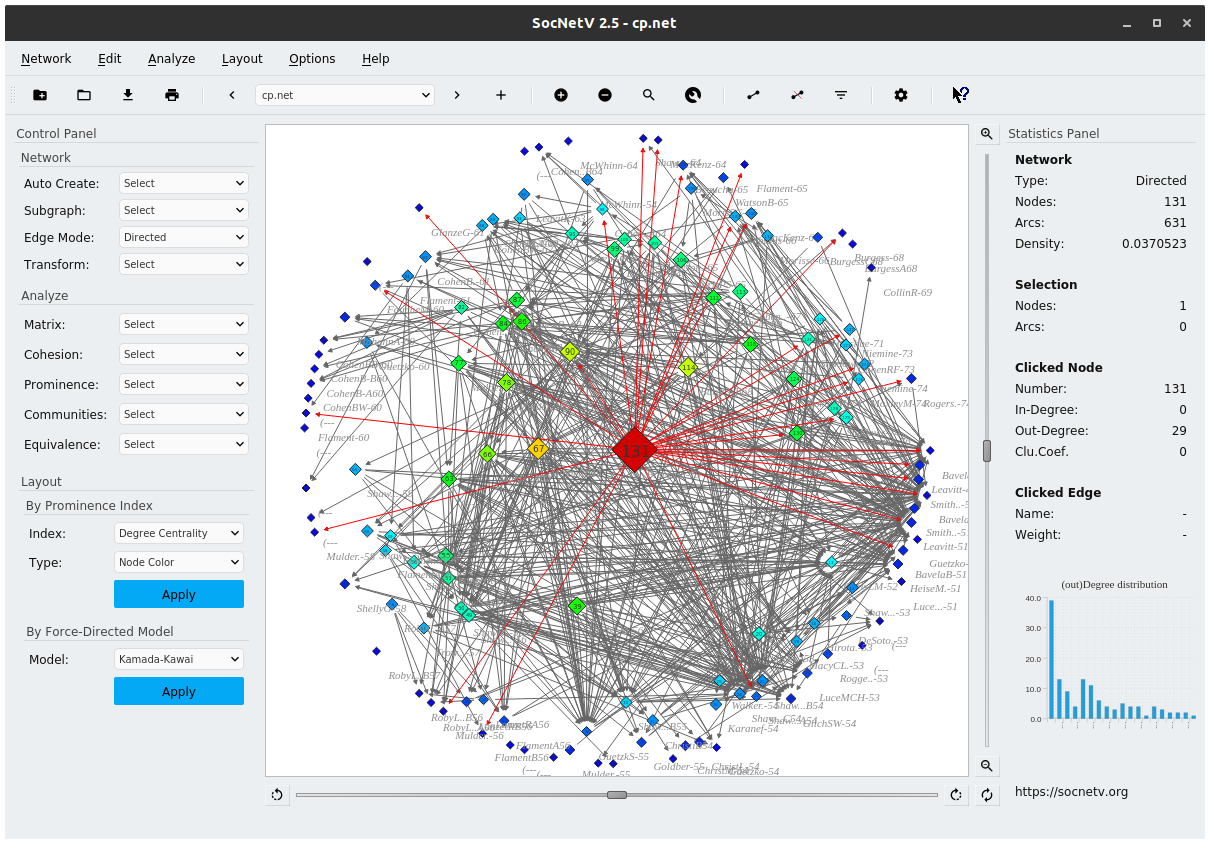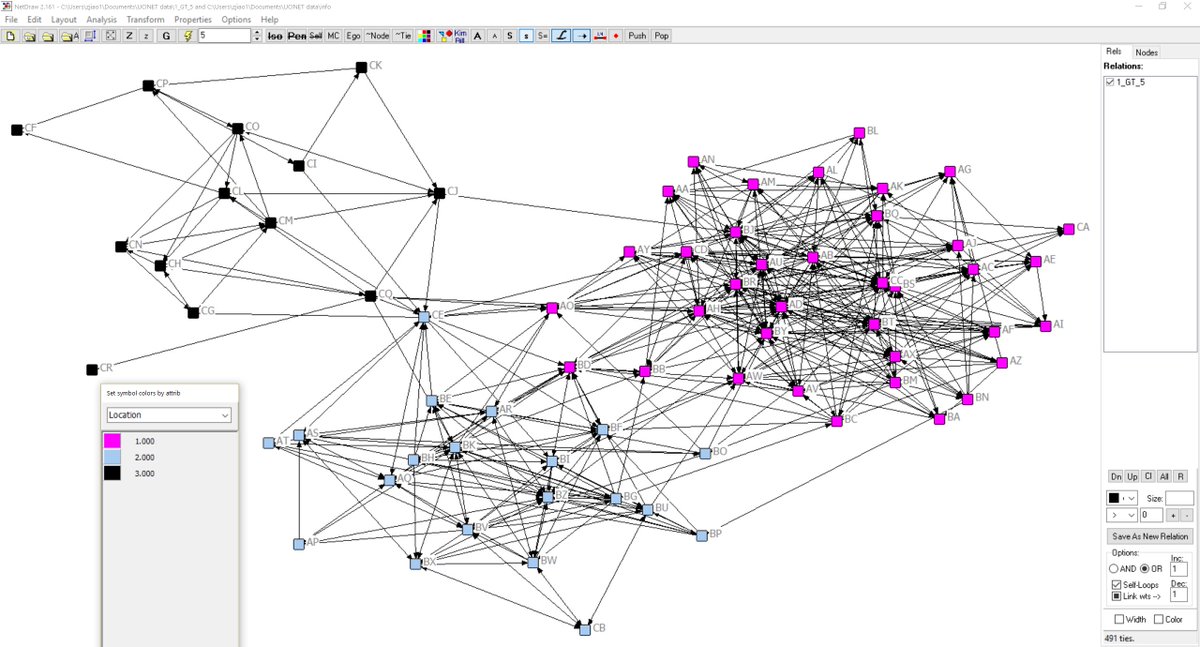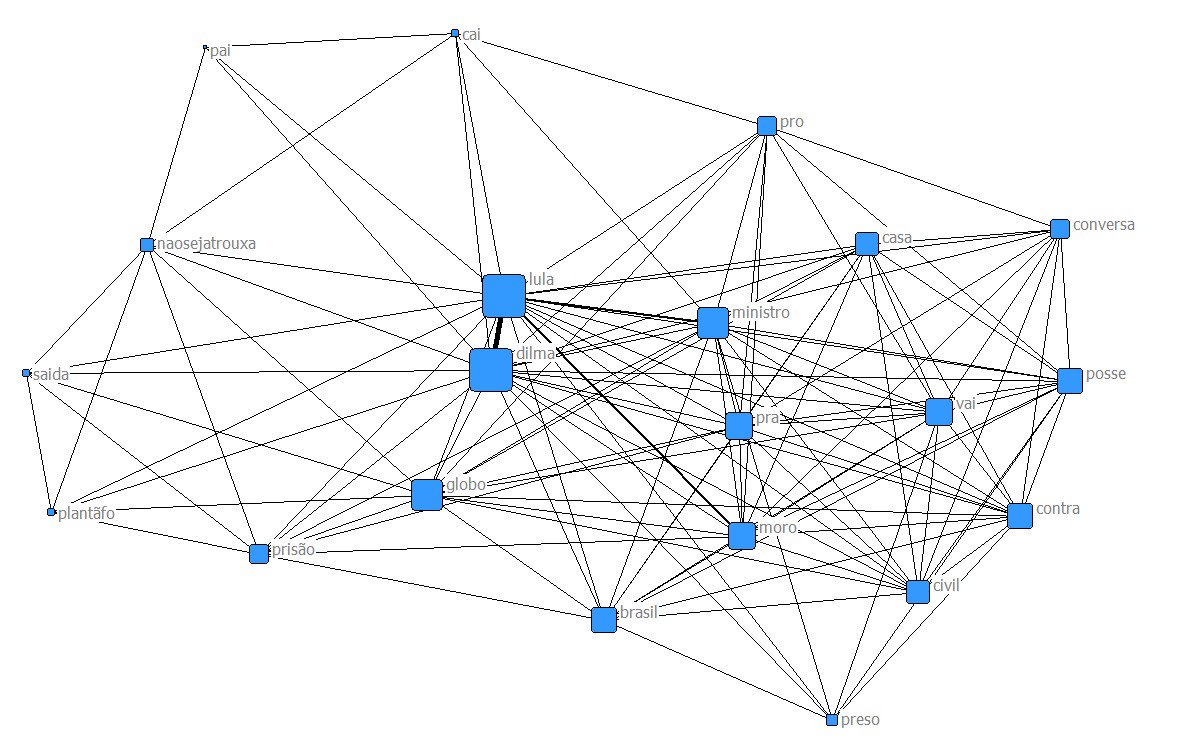How are the coefficients in MR-QAP calculated?
 posted Aug 24, 2016, 2:21 PM by Steve Borgatti
posted Aug 24, 2016, 2:21 PM by Steve Borgatti Ucinet Para Mac

The UCINET convention is to include ‘-Net’ and ‘-Att’ in the names of the two connected UCINET datasets. If we have both tie data and node data I will refer to it as a’ rich’ dataset. The conventions of a sociomatrix (UCINET Data -Display) UCINET data displays always show a matrix. Tie data always displays as a sociomatrix. Download Link: see this before you access - UCINET download license UCINET ucinet ucinet download ucinetid ucinet for mac ucinet tutorial ucinetid login ucinet manual ucinet help ucinet data sets. Ucinet free download, and many more programs. If you have a Mac or Linux, you can run UCINET via BootCamp, VMFusion Ware, Parallels or Wine. See our on this. The 32-bit version is the standard one and runs on both 32bit and 64bit Windows systems. A limited 64-bit version is available but does not have all UCINET functions. 100mb of disk space for the program itself (not including your data).
Ucinet Manual
The same as in OLS. The only difference is in the p-values. For example, suppose we have these two networks (expressed as adjacency matrices):
Now we use MR-QAP to predict the Y matrix from the X matrix. Here are the results: ------------ ------------ ------------ ------------ ------------ Model 0.19753 0.15295 0.17299 20.00000 20000.00000 REGRESSION COEFFICIENTS Un-Stdized Stdized Coef P-value As Large As Small Std Err ------------ ------------ ------------ ------------ ------------ ------------ Xmat 0.44444 0.44444 0.19549 0.19549 1.00000 0.22030 Intercept 0.05556 0.00000 0.00000 0.00000 0.00000 0.00000 Next we run the same regression in Stata. First step is to convert the data matrices into something Stata can understand, which is columns:
We enter these data into Stata, and then run regression: -------------+------------------------------ F( 1, 18) = 4.43 Model | .355555556 1 .355555556 Prob > F = 0.0496 Residual | 1.44444444 18 .080246914 R-squared = 0.1975 -------------+------------------------------ Adj R-squared = 0.1529 ------------------------------------------------------------------------------ -------------+---------------------------------------------------------------- x | .4444444 .2111436 2.10 0.050 .0008482 .8880407 _cons | .0555556 .0667695 0.83 0.416 -.0847219 .195833 ------------------------------------------------------------------------------ As you can see, the regression coefficients are the same, but the p-values are different. |



How to Use > FAQs & Tips > Installing UCINET on a Mac or Linux machine using Wineposted May 18, 2013, 9:41 AM by Steve Borgatti [ updated Jun 15, 2015, 11:43 AM]
|